
We’re here to help! Wild Yards is a completely free website that is 100% dedicated to helping you create a wildlife-friendly, sustainable yard. Read more
WildYards is reader-supported. When you buy a product through a link on our site, we may earn a comission. Every product is independently selected by our (obsessive) editors and our reviews are unbiased and objective. Read more about our mission or our privacy policy.
Fresh herbs make all the difference in a homecooked meal. If you’re thinking of growing basil in your vegetable garden to use in sauces, soups, and pasta dishes, you may be wondering which basil companion plants to grow along with it. This is a fast-growing herb that loves full sun and compost-enriched soil that can be kept moist but drains well. Growing plants with similar needs allows you to make the most of the space in your garden.
Marigolds, cilantro, and oregano work with your basil plants to keep insects off of the other plants in your garden. Basil will benefit from the nitrogen boost that beans and other legumes provide. And basil won’t interfere with the nutrient requirements of root vegetables like carrots and potatoes.
13 Best basil companion plants for your garden
Basil is an adaptable, easy-growing plant that doesn’t require much attention. You can grow this herb in pots, raised beds, or right alongside the other plants in your vegetable patch. Basil is an annual plant that typically grows around 24 inches tall. A valuable companion plant in its own right, basil works to repel pesky bugs while its fragrant flowers attract pollinators to your garden. Basil grows best when planted with the following companion plants.
Beans
Beans and basil enjoy a mutually beneficial relationship. Basil helps repel the insects that like to eat bean plants, and beans help enrich the soil with the nitrogen that basil needs to produce its vibrant green leaves.
Without a trellis, beans quickly take over the surrounding ground space, smothering neighboring plants. So be sure to provide your beans with something to climb onto. You can try growing bush beans, instead. If you’d rather not grow beans in your garden at all, try growing lupines near your basil. As legumes, lupines will also increase nitrogen availability in the soil.
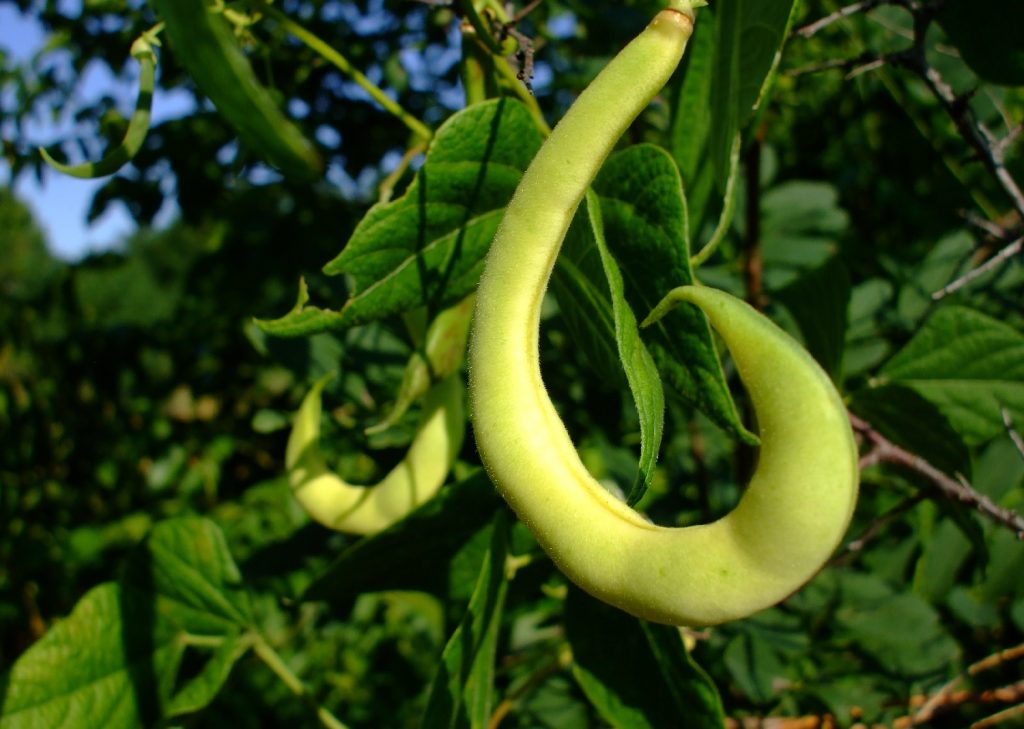
Carrots
When you plan your garden, it can be tough figuring out which plants to grow near your carrots. These are heavy feeders with deep root systems that suffer when they have to compete with other plants. But basil plants can safely be grown near your rows of carrots because they have shallow root systems that won’t leech minerals from deep in the soil.
Because of its pungent aroma, basil can help ward off the insects that prey on carrots, including armyworms, mites, and weevils. Basil also helps attract ladybugs that can keep the pest levels in your garden to a minimum.
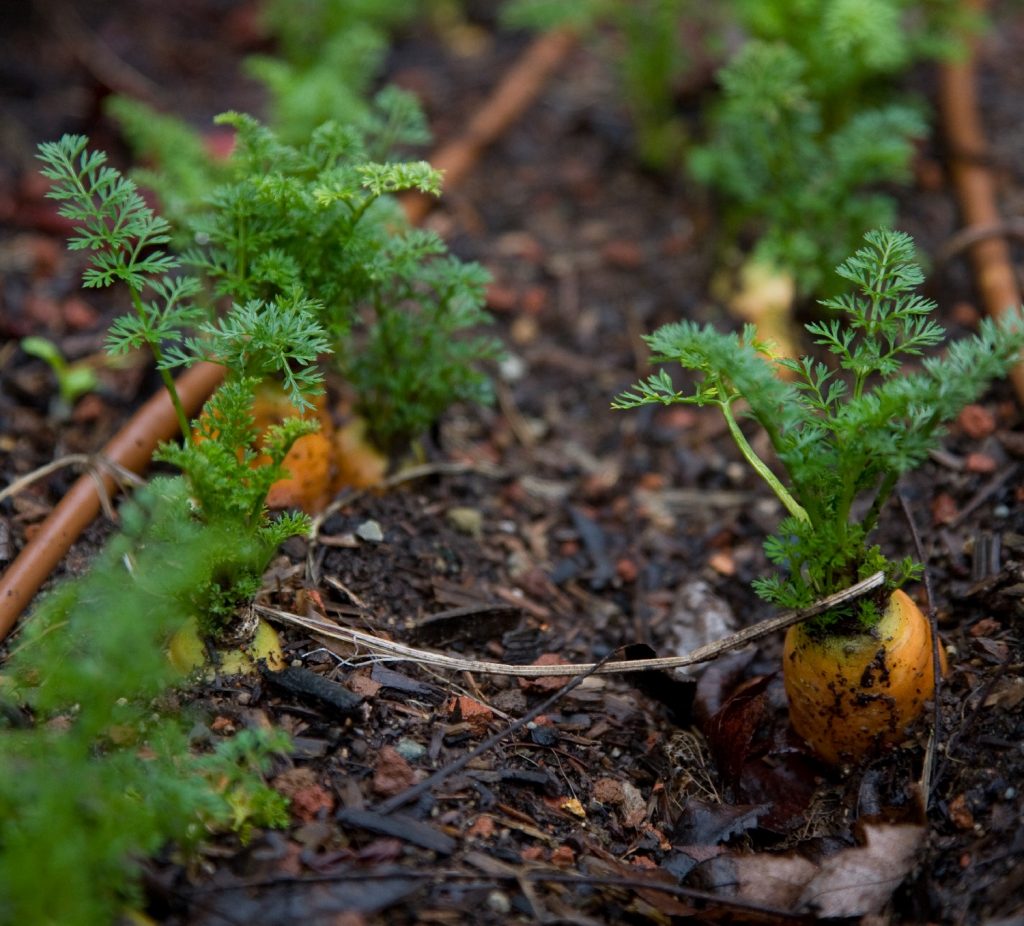
Asparagus
Asparagus takes a long time to grow. You can expect to wait 3 years for your asparagus seeds to sprout. So when they finally do come up, the last thing you want is to see them fall prey to a bunch of hungry insects.
Basil helps repel asparagus beetles who can destroy asparagus stalks seemingly overnight. Ladybugs are especially fond of basil when it’s grown near asparagus. Growing these two plants together is a great way to keep aphids and other tiny insects out of your garden.
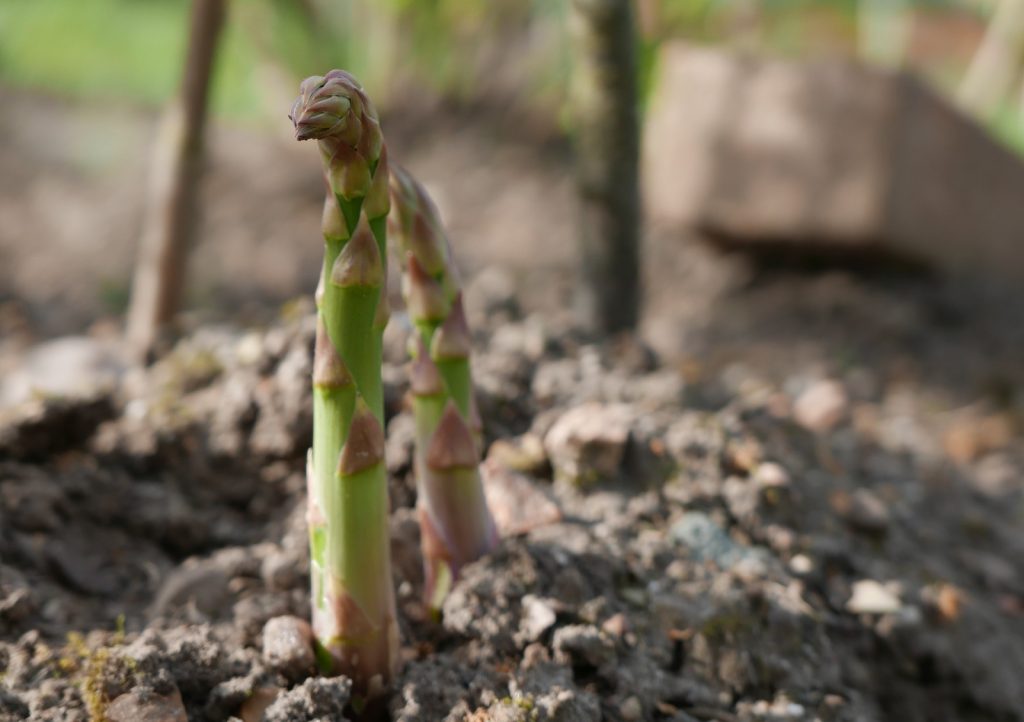
Chamomile
A rookie mistake many new gardeners make is planting all of their herbs in the same space because, hey, they’re herbs. They all have the same growing requirements, right? Wrong. Herbs are just like any other plant. They each come with their own likes and dislikes. And when it comes to planting other herbs with your basil, it can be pretty tricky.
Chamomile is one of the few herbs that can tolerate basil’s growing requirements. And, when kept together, these plants can enhance each other’s flavors, all while working to keep harmful bugs away from your other produce.
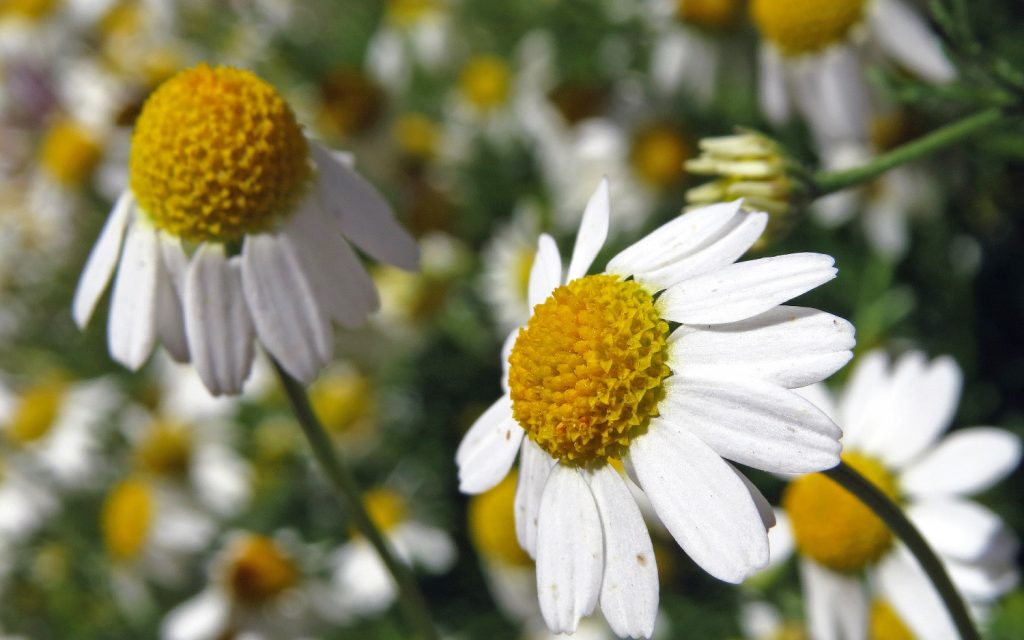
Peppers
One of the keys to growing a good crop of peppers is humidity. These plants require plenty of hydration, but too much water in the soil can result in weak-tasting fruits. Keeping the air around them moist helps the plants stay hydrated without reducing capsaicin levels in the peppers themselves.
Pepper plants average around 48 inches tall. Because basil grows roughly half that height, it can help prevent circulation around the stalks of the pepper plants, keeping the air around them humid.
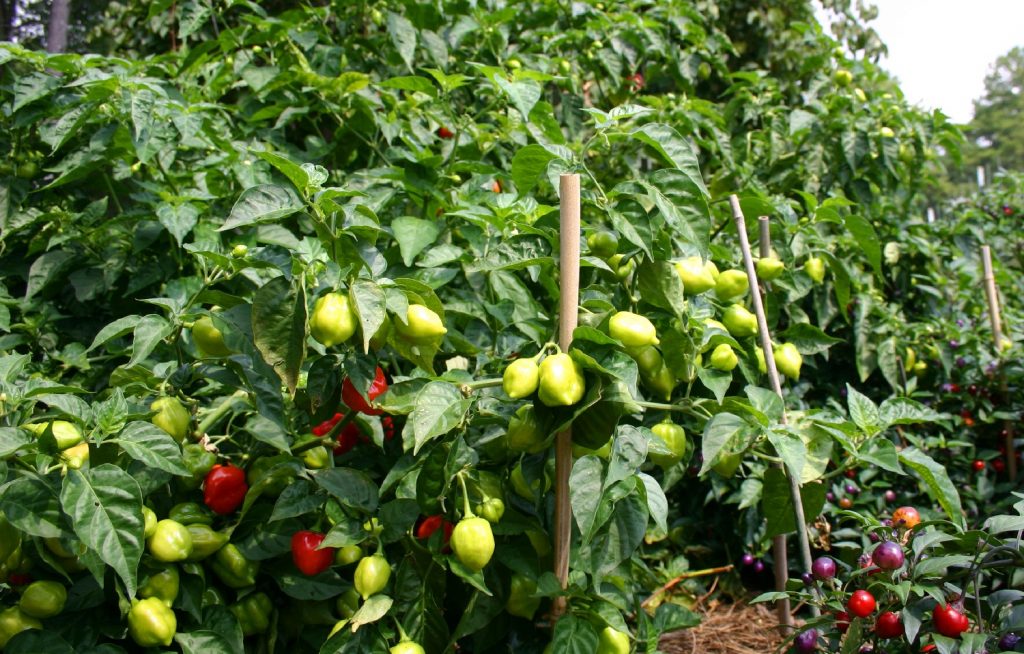
Parsley
For better-tasting basil, grow parsley in neighboring rows. When basil plants are grown near parsley, they produce stronger essential oils, meaning they have tastier foliage. Together, basil and parsley’s potent aromas mingle to defend themselves, and surrounding plants, from nematodes, mites, and aphids.
Parsley grows about a foot taller than basil, but its delicate frond-like leaves allow plenty of light through for neighboring basil plants to enjoy. These plants protect each other’s roots from harsh sunlight, resulting in better moisture retention in the soil, and, consequently, faster growth.
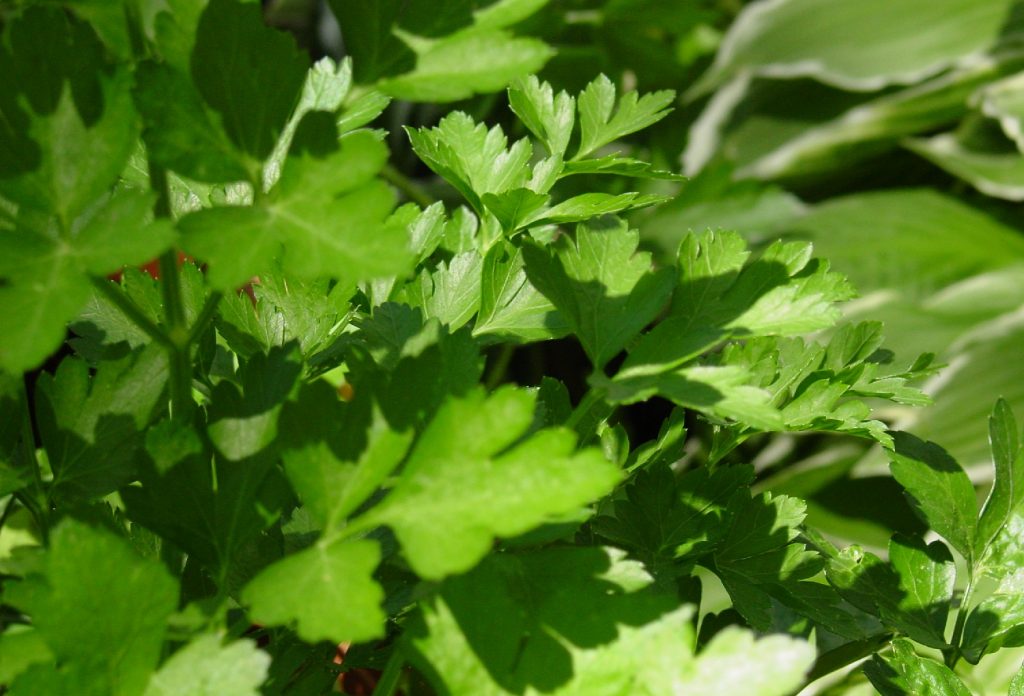
Tomatoes
Basil’s nectar-rich flowers help attract pollinators to your tomato plants, drastically improving fruit production. But growing basil near your tomato plants doesn’t just boost crop yield. It also makes your tomatoes taste better.
Tomatoes are some of the easiest garden veggies to grow. But they can attract all manner of pests, including hornworms, cutworms, snails, slugs, and beetles. Fortunately, basil’s strong scent helps to keep these pesky bugs away from your tomatoes so you can enjoy them, yourself.
Borage
Here’s another herb that enjoys basil’s company. Borage is a fantastic addition to any garden because bees, hummingbirds, butterflies, and many other pollinators love to feed on their flowers. Wasps and other parasitic insects enjoy them, too, and will happily devour the harmful bugs hiding in your vegetables while visiting your garden.
Grown together, basil and borage provide your garden with fantastic pest control, which saves you time and labor. Because both of these plants share the same growing requirements, you can safely grow borage as basil companion plants. Borage can be grown with radishes and blueberries, too.
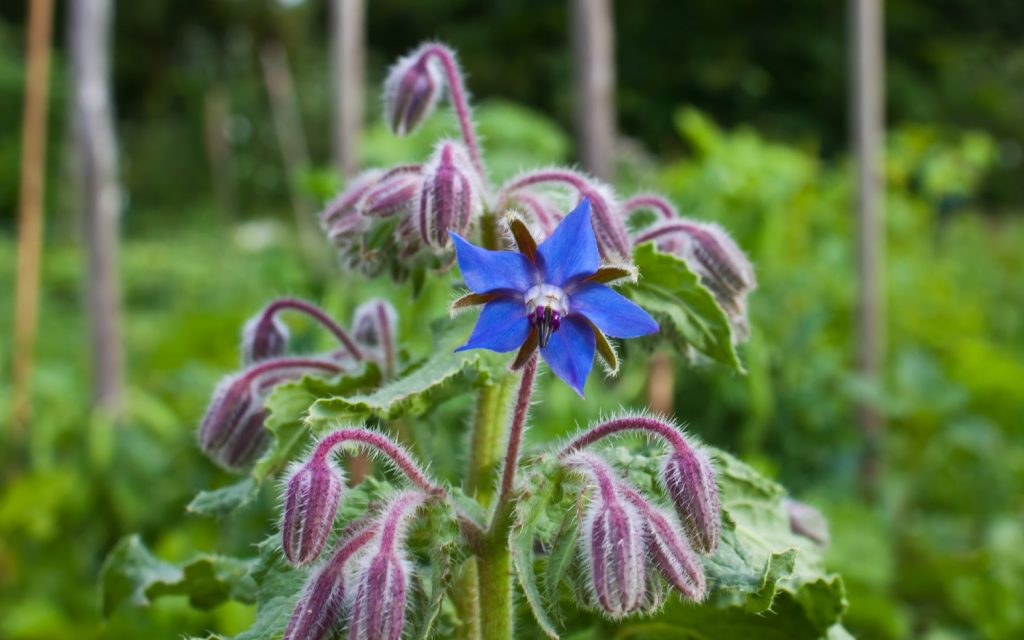
Marigolds
These popular annuals are as useful as they are pretty, and when grown with basil, they can provide your garden with seemingly endless benefits. See, marigolds have a distinctive smell. Some people might call it a bad smell, and most bugs would certainly agree. When planted in tandem with basil, marigold’s strong scent keeps beetles, aphids, and nematodes away from your vegetables.
Now, there is some evidence that marigolds actually attract insects. But, even if this is the case, they can still benefit your garden by keeping harmful pests off of your produce. So you can use marigolds as a trap crop, or grow them along with basil in between rows of your garden to ward off insects.
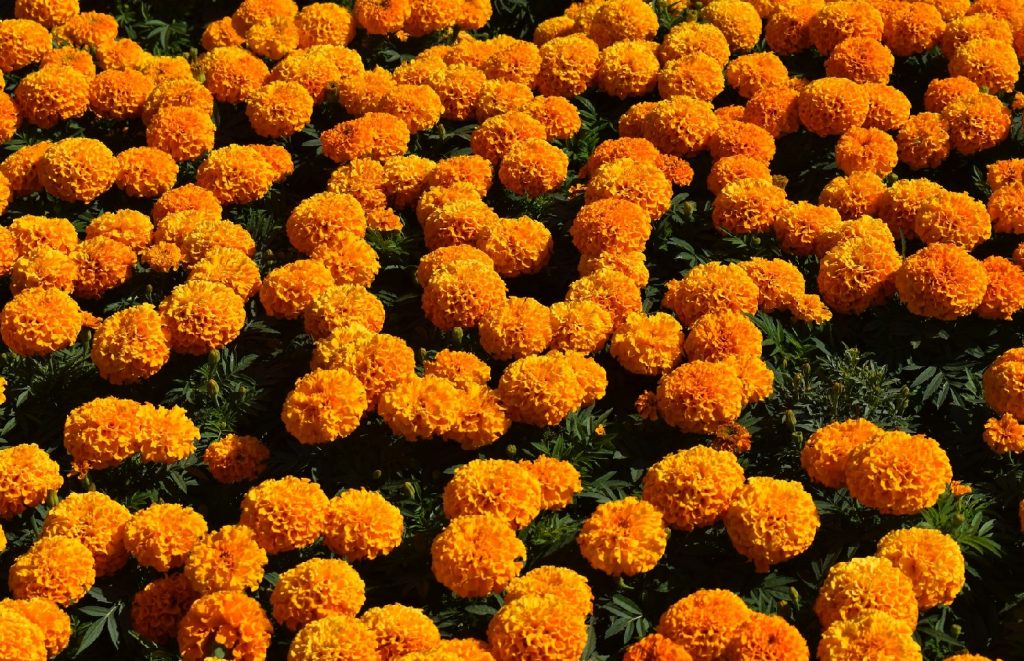
Cilantro
Both cilantro and basil perform best when grown in fertile soil and full sun, so keeping these two aromatic herbs in the same row allows you to make the most of your garden space. While basil is an excellent pest controller, it can fall prey to insects, too. Growing cilantro as basil companion plants helps keep aphids, mites, and other predators off your basil’s leaves and out of your garden.
Basil and cilantro won’t compete with each other for nutrients. And neither of them will smother the other when grown close together. In fact, these plants grow best when planted in close proximity because their dense foliage helps prevent the sun from evaporating precious moisture in the soil below.
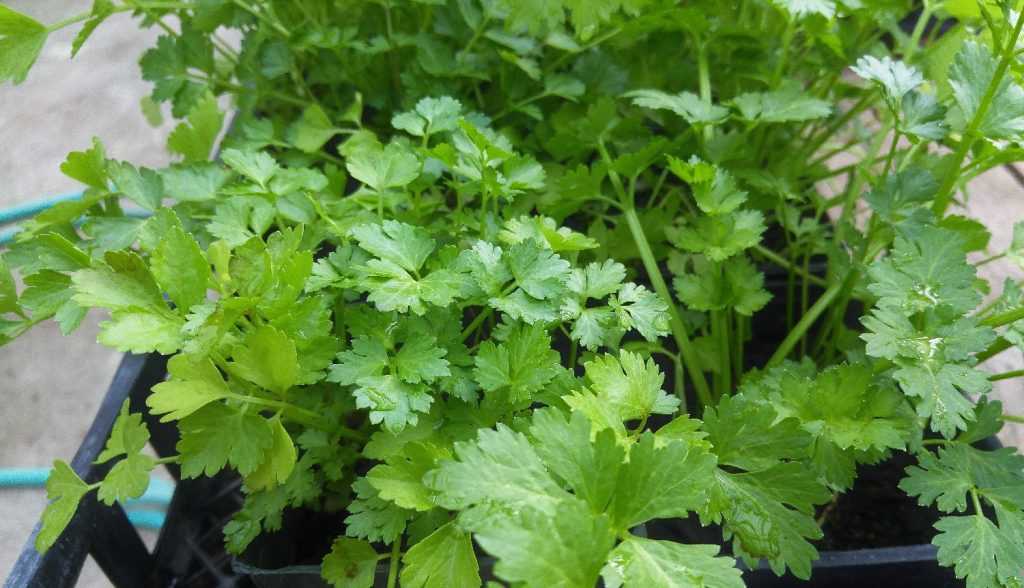
Potatoes
Heavy nutrient users with deep root systems, potatoes are finicky about which plants they grow by. But basil’s shallow roots never rob potatoes of the minerals they need to grow. And, when planted in well-drained soil, basil can help lock just enough moisture into the ground for potatoes to thrive.
Of course, potatoes don’t just grow below the surface. The plants themselves can grow over 3 feet tall. While potato plants help keep deer away from your garden, they’re a popular target for blister beetles, flea beetles, and, of course, potato beetles. Growing basil near your potato plants keeps these bugs at bay.
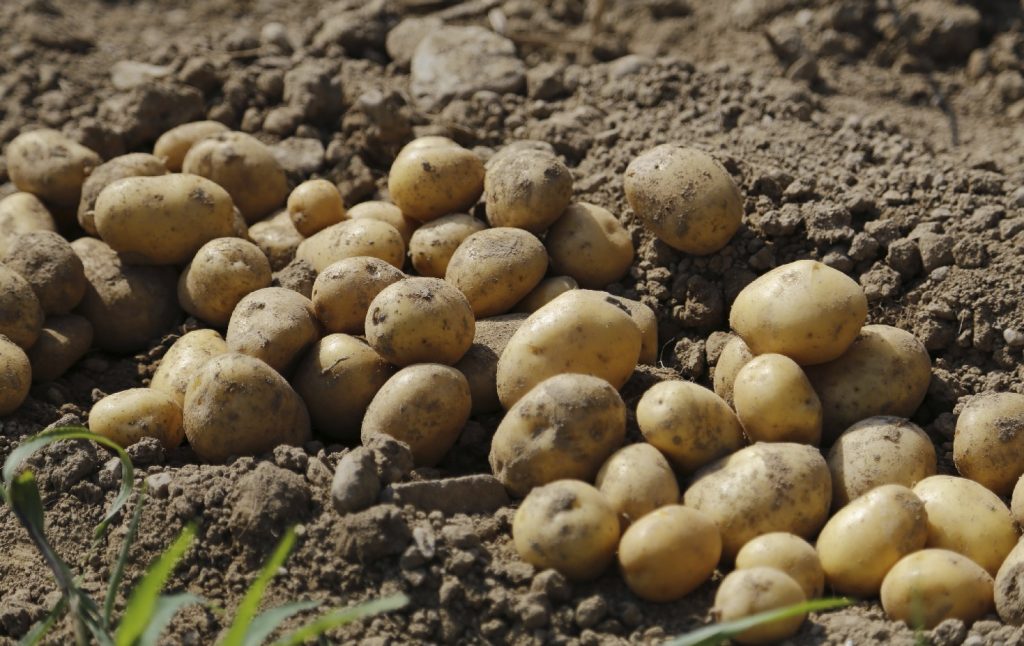
Anise
One of the major benefits of growing anise with basil is that it helps increase essential oil production, resulting in stronger, sweeter tasting basil. So if you want to grow basil to harvest, not just to control the pests in your garden, planting anise nearby is a must.
Anise is a fragrant herb with star-shaped seeds that taste and smell a lot like licorice. Many insects are sensitive to the fragrance and will steer clear of anise plants. Growing anise with basil keeps insects off of both of these herbs, as well as any other plants sitting nearby.
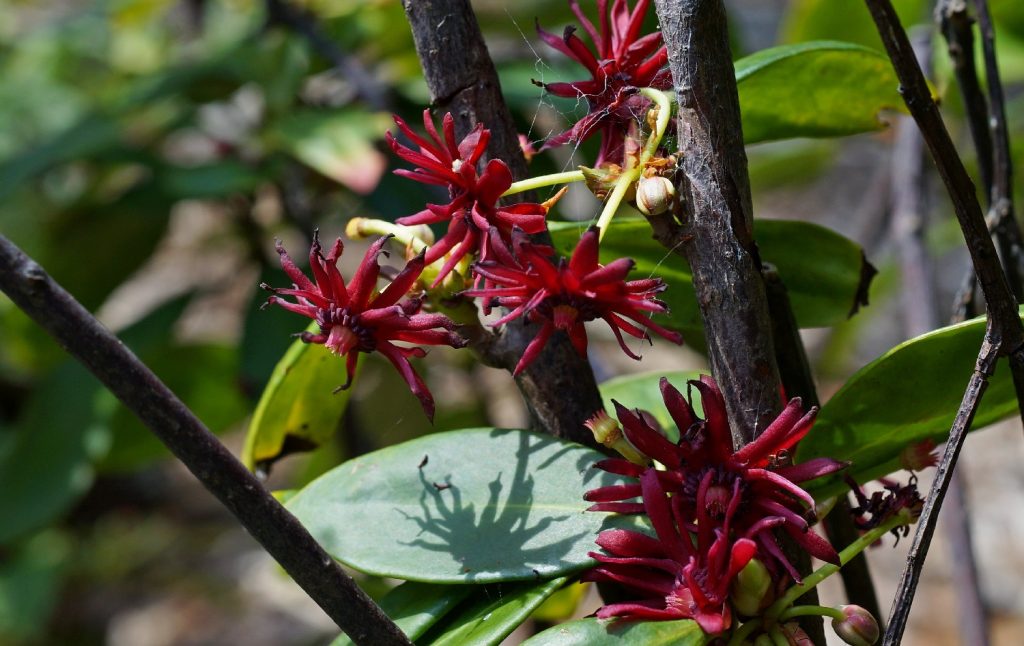
Garlic
Like other root vegetables, garlic is a fairly heavy nutrient user with deep root systems. On average, garlic roots reach 12 inches into the soil, with the roots of some mature garlic plants going 30 inches down. These vegetables must be grown near plants that have low nutrient requirements and shallow root systems. Basil fits the bill.
Basil and garlic smell delicious if you ask us, but bugs can’t stand the smell of either of these plants. Growing them together is a fantastic way to keep pests out of your vegetable patch. Try growing your garlic and basil near your tomato plants to keep insects from destroying their fruits.
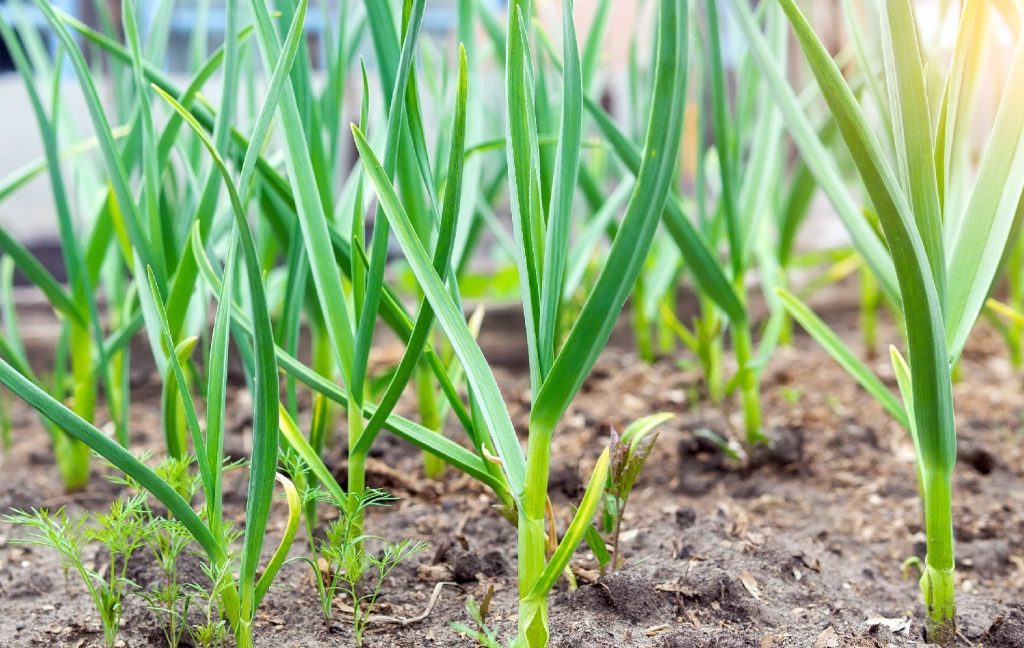
6 Basil companion plants you should avoid
Basil’s ability to attract pollinators while sending harmful insects on their way makes it a fantastic addition to any garden. While basil gets along with many garden plants, it can suffer when grown near the following herbs and vegetables.
Mint
Mint foliage emits a strong odor that aphids, mites, whiteflies, and many other insects find repulsive. But this herb’s sweet, nectar-rich flowers are a hit with bees and other pollinators. A perennial plant, mint grows so well in moist, shady conditions that many gardeners consider it invasive. But because its growing requirements are the complete opposite of basil’s, it’s best not to grow them as companion plants.
Sage
Sage is just as easy to care for as basil, and the aromatic essential oils in its foliage can drive scads of damaging insects from your garden. But, because sage prefers sandy, nutrient-poor soil, it won’t grow well when planted in the fertile ground that basil needs to thrive.
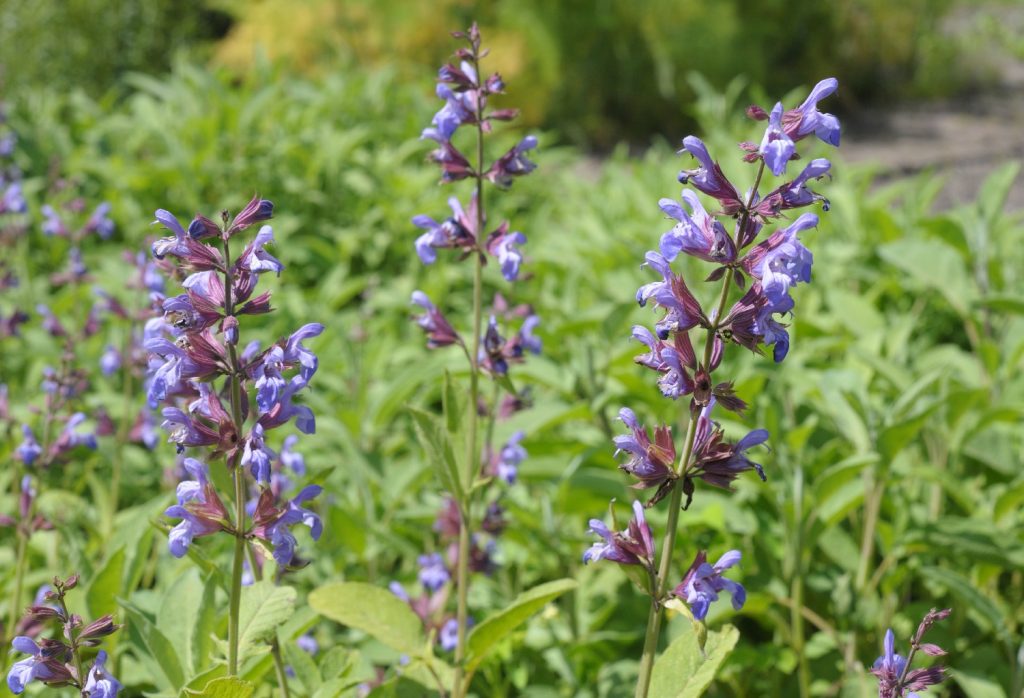
Thyme
This is a popular herb for backyard gardeners, and it’s so easy to propagate from cuttings. But, unlike basil, thyme grows best in sandy soils that stay dry. This herb is much more tolerant of drought conditions than basil, so it’s best to plant them on opposite sides of your garden.
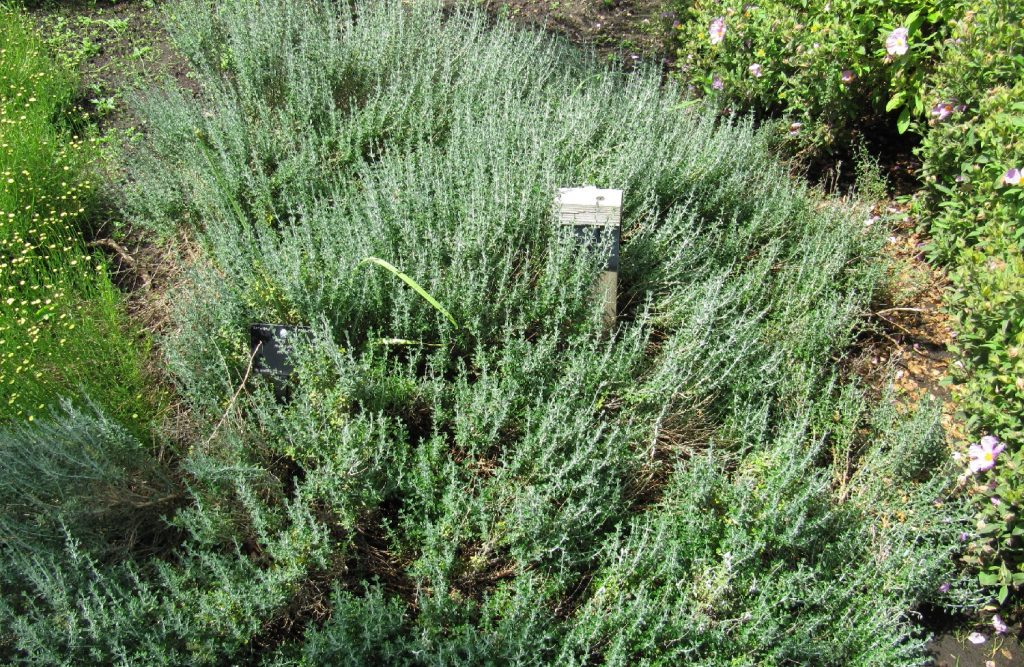
Fennel
Fennel’s dainty yellow flowers attract parasitic wasps that feed on garden pests. So if you have problems with bugs, growing fennel can certainly help. But fennel is a finicky plant that doesn’t like to be grown with, well, anything, really. So if you want to grow fennel, keep it in pots, separate from your basil and other herbs.
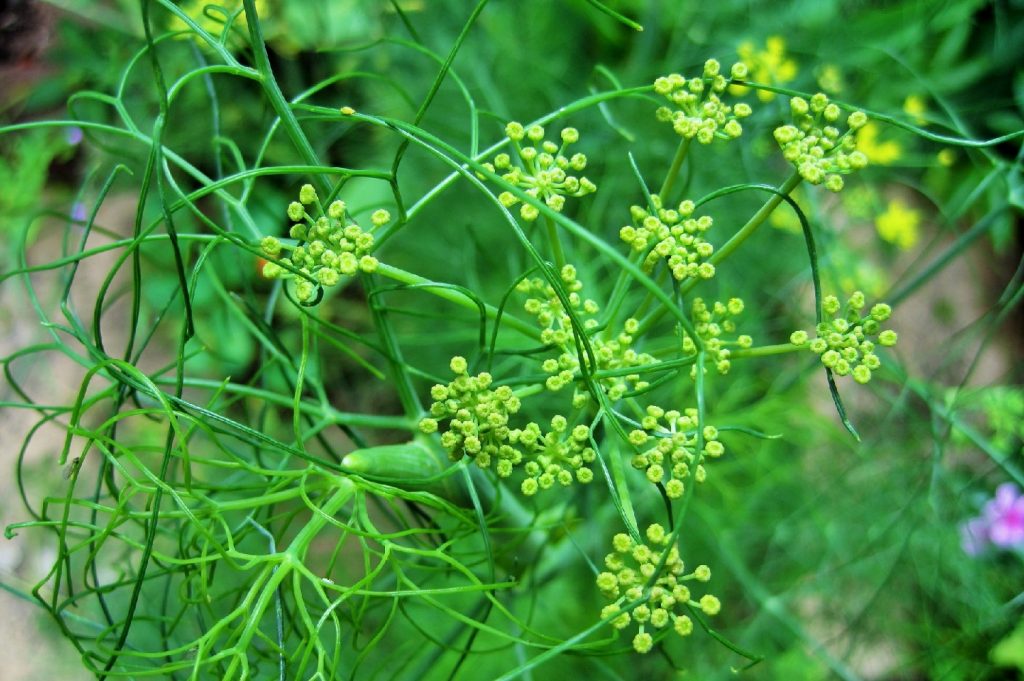
Lavender
With its aromatic foliage and beautiful purple flowers, lavender has the potential to attract countless bees, butterflies, and hummingbirds to your garden. But this is a drought-tolerant shrub that grows best in sandy, nutrient-poor soils. So if you decide to grow basil and lavender in your garden this growing season, don’t plant them next to each other.
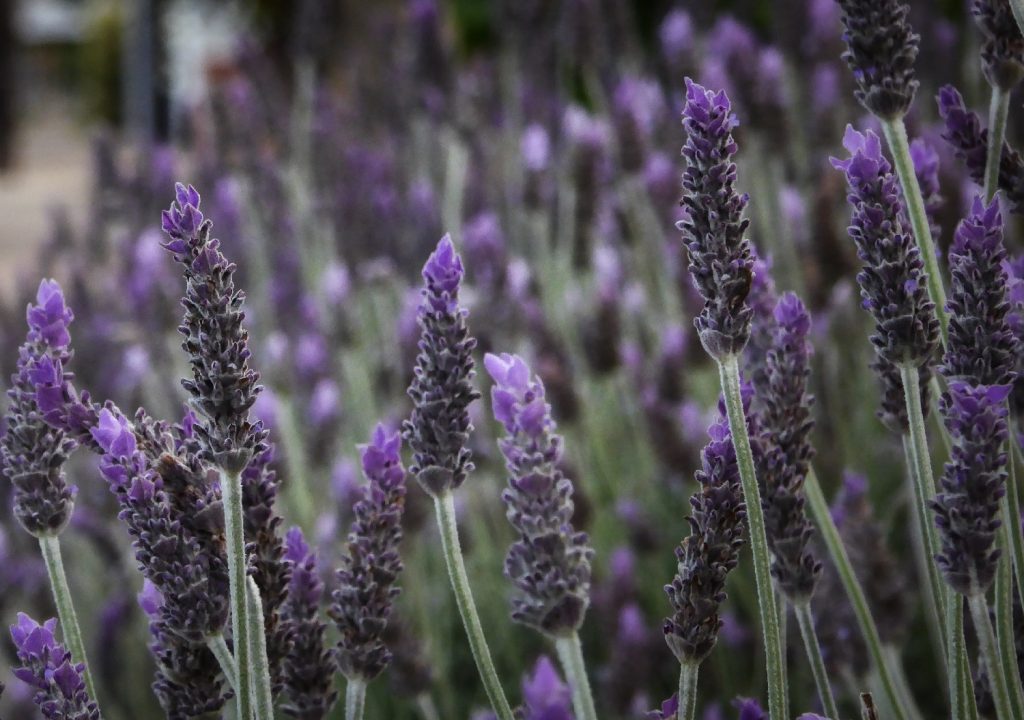
Cucumber
As with tomatoes, basil can alter the flavor of your cucumbers. This can be a good thing or a bad thing, depending on your taste preferences. But growing cucumbers as basil companion plants has a major downside, and that is that they both compete for the same nutrients. Keeping these plants close together will stunt their growth and hinder crop production. So be sure to grow them in separate spaces. If you’re looking for a cucumber companion plant, try beans or dill, instead.
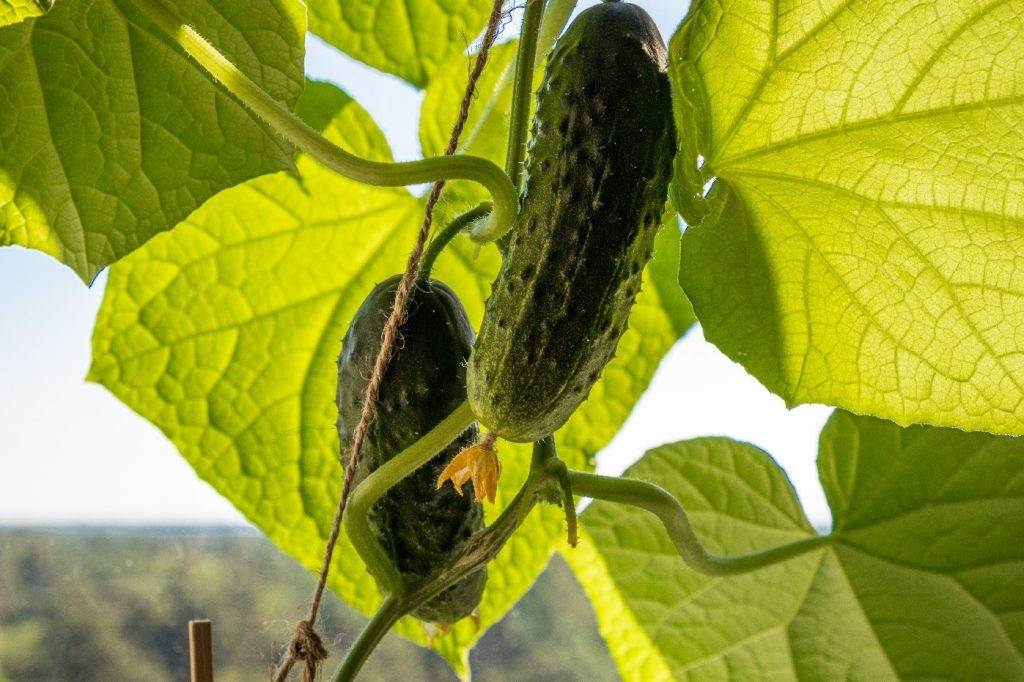
Does companion planting actually save time?
It’s true that companion planting takes a little extra time. You have to map out where all of your plants will grow so that none of them compete with each other, and you have to make sure there’s enough room for your herbs and vegetables to be grown near their favorite buddies. It all sounds like a lot of work!
But companion planting saves you time and labor in the long haul. By growing these basil companion plants, you’ll spare yourself the frustration of battling insect infestations, all while improving pollination rates in your garden. This two-pronged effect results in better crop production so you can get the tastiest herbs and vegetables possible.
